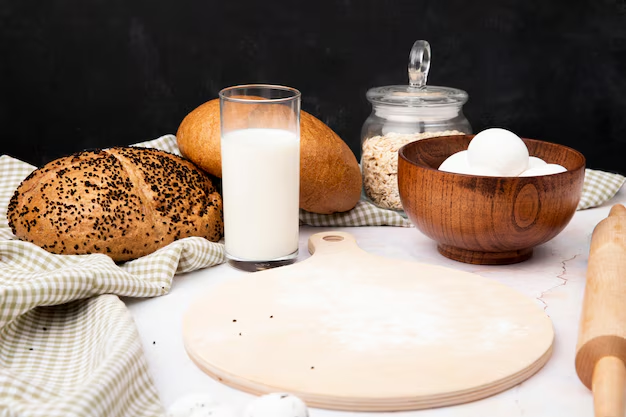How Long Will Your Yeast Last in the Refrigerator? Understanding Shelf Life and Best Practices
Bread making is an art, and at its heart lies a living ingredient—yeast. Whether you're an avid home baker or someone who occasionally experiments in the kitchen, understanding yeast's shelf life is essential for successful baking. So, how long does yeast last in the refrigerator? Let's dive into this topic and uncover everything you need to know about storing and using yeast effectively.
🥐 What is Yeast and Why Does It Matter?
Yeast is a microorganism that plays a crucial role in baking and brewing. It's a fungus that ferments sugars, releasing carbon dioxide that causes dough to rise. There are several types of yeast you might encounter:
- Active Dry Yeast: Commonly used by home bakers. Needs activation in warm water before use.
- Instant Yeast: Finer granules that don't require pre-activation.
- Fresh Yeast: Also known as cake yeast, with a short shelf life but preferred for some traditional recipes.
Each type of yeast has distinct storage and longevity requirements, so let's delve deeper into how these factors affect its shelf life.
🥯 How Long Does Yeast Last in the Refrigerator?
Active Dry Yeast
Active dry yeast can be stored in an unopened container at room temperature until its expiration date. However, once opened, it should be refrigerated to maintain its potency. In the fridge, active dry yeast typically lasts for four months.
Instant Yeast
Instant yeast is similar to active dry yeast in its longevity and conditions. It often lasts longer because of its fine granulation. Stored in the fridge, it can remain effective for 6 months.
Fresh Yeast
Fresh yeast is more perishable and should always be refrigerated. It lasts only about two weeks in the refrigerator. This shorter shelf life requires more careful planning to ensure it's used before it loses its effectiveness.
🥖 Best Storage Practices to Extend Yeast Longevity
To ensure your yeast remains active and capable of producing the rise and flavor you expect, consider these storage practices:
Airtight Containers
Once opened, always transfer yeast into an airtight container to reduce moisture exposure.
Label & Date
Marking the date of opening on the container helps track its usability.
Freezing
For long-term storage, consider freezing yeast. When frozen, yeast varieties can last up to a year. Just remember to bring it to room temperature before use.
🥳 Recognizing If Your Yeast is Still Active
Before using refrigerated yeast, it’s crucial to check if it’s still active. Here's how to perform a simple yeast test:
Proof Test: Dissolve a teaspoon of sugar in 1/4 cup of warm water (about 110°F). Add a packet of yeast (or 2 1/4 teaspoons) and wait for 10 minutes. If it foams and bubbles, your yeast is still potent and ready to use.
Visual Check: Expired yeast may not bubble or foam. It may also have an off smell or color, indicating it's time to replace it.
🧁 Common Concerns and Tips for Yeast Storage
Does Yeast Go Bad?
Yes, yeast can lose its effectiveness over time, even if stored properly. This is especially true for fresh yeast due to its moisture content. Always check the expiration date and store it correctly to extend its lifespan.
Reviving Dormant Yeast
If your yeast starts failing the proof test and hasn't expired, consider increasing the proofing time. Sometimes older yeast can be revived with a little extra attention.
Saving Expired Yeast
Expired yeast can often be repurposed in gardening as a nutrient-rich fertilizer or a natural pesticide in compost piles.
🧑🍳 Ensuring the Right Environment for Your Yeast
Yeast health depends heavily on its environment. Here are some best practices to maintain optimal conditions:
- Temperature: Yeast thrives between 77°F and 95°F, but must be kept cold during storage.
- Moisture Control: Avoid moisture intrusion by using desiccant packets in your storage containers.
- Light Exposure: Store yeast in a dark space to prevent degradation from light exposure.
🍞 Baking with Yeast: Additional Tips
Here are additional considerations to ensure your baked goods turn out perfectly:
- Room Temperature Ingredients: Aim for room temperature ingredients during baking to ensure uniform mixing and proper yeast activation.
- Consistent Proofing Conditions: Ensure a consistent and warm environment for proofing dough. Using a proofing box or a slightly warm oven can achieve this.
📋 Quick Reference Guide: Yeast Storage Cheat Sheet
☑️ Active Dry Yeast
- Fridge: 4 months
- Freezer: 1 year
☑️ Instant Yeast
- Fridge: 6 months
- Freezer: 1 year
☑️ Fresh Yeast
- Fridge: 2 weeks
- Freezer: 3 months
🌟 Pro Tips
- Store in airtight containers.
- Date and label all yeast packages.
- Perform proof tests regularly.
Storing yeast correctly ensures every loaf you bake rises to the occasion. With these best practices, your baking experience will be smooth, enjoyable, and consistently successful. Remember, the key lies in regular checks and smart storage strategies. Enjoy the magic of baking, and may every loaf rise to meet your expectations!
